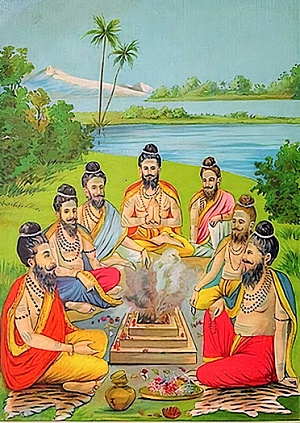News
-
 Pranayama workshop, Mar 1-7
Pranayama workshop, Mar 1-7
-
 21-day Pranayama challenge
21-day Pranayama challenge
-
 Nāda meditation workshop, January 8-12
Nāda meditation workshop, January 8-12
-
 April 3, Navaratri with Yogi Matsyendranath Maharaj, Australia, Queensland
April 3, Navaratri with Yogi Matsyendranath Maharaj, Australia, Queensland
-
 March 17, 2020. Purifiying Pranayama With Yogi Matsyendra Nath
March 17, 2020. Purifiying Pranayama With Yogi Matsyendra Nath
-
 November 2019, Tantra Workshop Series in Argentina
November 2019, Tantra Workshop Series in Argentina
-
 Workshop in Gualeguaychu
Workshop in Gualeguaychu
-
 17-18 November 2018, Yogi Matsyendranath in Źarate (Argentina)
17-18 November 2018, Yogi Matsyendranath in Źarate (Argentina)
-
 15-16 November 2018, Yogi Matsyendranath visit to Uruguay
15-16 November 2018, Yogi Matsyendranath visit to Uruguay
-
 12 Nov 2018, Lecture at USAL (Salvador University)
12 Nov 2018, Lecture at USAL (Salvador University)
-
 10-11 November 2018, Workshops in Quilmes and La Plata (Argentina)
10-11 November 2018, Workshops in Quilmes and La Plata (Argentina)
-
 8 November 2018, Open conference in Necochea (Argentina)
8 November 2018, Open conference in Necochea (Argentina)
-
 2,3,4 November 2018 - Participating in XVI Retreat International of Yoga and Meditation
2,3,4 November 2018 - Participating in XVI Retreat International of Yoga and Meditation
-
 Programme in Québec (Canada) 13-16 June
Programme in Québec (Canada) 13-16 June
-
 Melbourne Book Launch
Melbourne Book Launch
-
 4-years Summer Program
4-years Summer Program
-
 Biography of a Russian Yogi
Biography of a Russian Yogi
-
 November 2017, Visit of Yogi Matsyendranath to Argentina
November 2017, Visit of Yogi Matsyendranath to Argentina
-
 Satsangs of Yogi Matsyendranatha Maharaj in Berlin
Satsangs of Yogi Matsyendranatha Maharaj in Berlin
-
 Seminars and trainings in June-July 2015 (France)
Seminars and trainings in June-July 2015 (France)
Rishi
Rishi
 ऋषि, ṛṣi
ऋषि, ṛṣi
"a seer, inspired poet or sage"
Rishis are associated with the Vedic hymns, which were originally transmitted orally from generation to generation in the families of rishis and only many centuries later were written down and divided into 4 books.
From the family clans of the rishis, gotras (spiritual lineages) subsequently arose. Also, the rishis are the discoverers of most mantras and their original Gurus, and the corresponding nyasa (rishi-nyasa) is performed on the head.
There are seven main rishis or saptarṣi, the first mention of which can be found in the "Rigveda". They are called divine, fathers. These rishis are considered to be on the same level with the gods. List of the seven rishis from the "Vishnu Purana": Kratu, Pulaha, Pulastya, Atri, Angiras, Vasistha and Bhrigu. The names vary according to the sources, sometimes their number reaches nine. There is also an opinion that each manvantara has its own saptarshi.
"Vishnu Purana" divides the rishis into three classes. These are brahmarshis born from the mind of Brahma, such as Vasishtha, devarshis – divine rishis, like Narada, and rajarshis, or kings who became rishis due to their knowledge and ascetic exploits, such as Janaka or Vishvamitra.
The rishi’s tradition is closely intertwined with the muni tradition, often including the same sages, such as Narada or Agastya. But muni are mainly associated with asceticism and the way of life of hermits, while the rishis were, as a rule, grihasthas. The rishis were more involved in karma-kanda, which included the performance of fire rituals, while the practice of muni was jnana-kanda, for example, dhyana.

